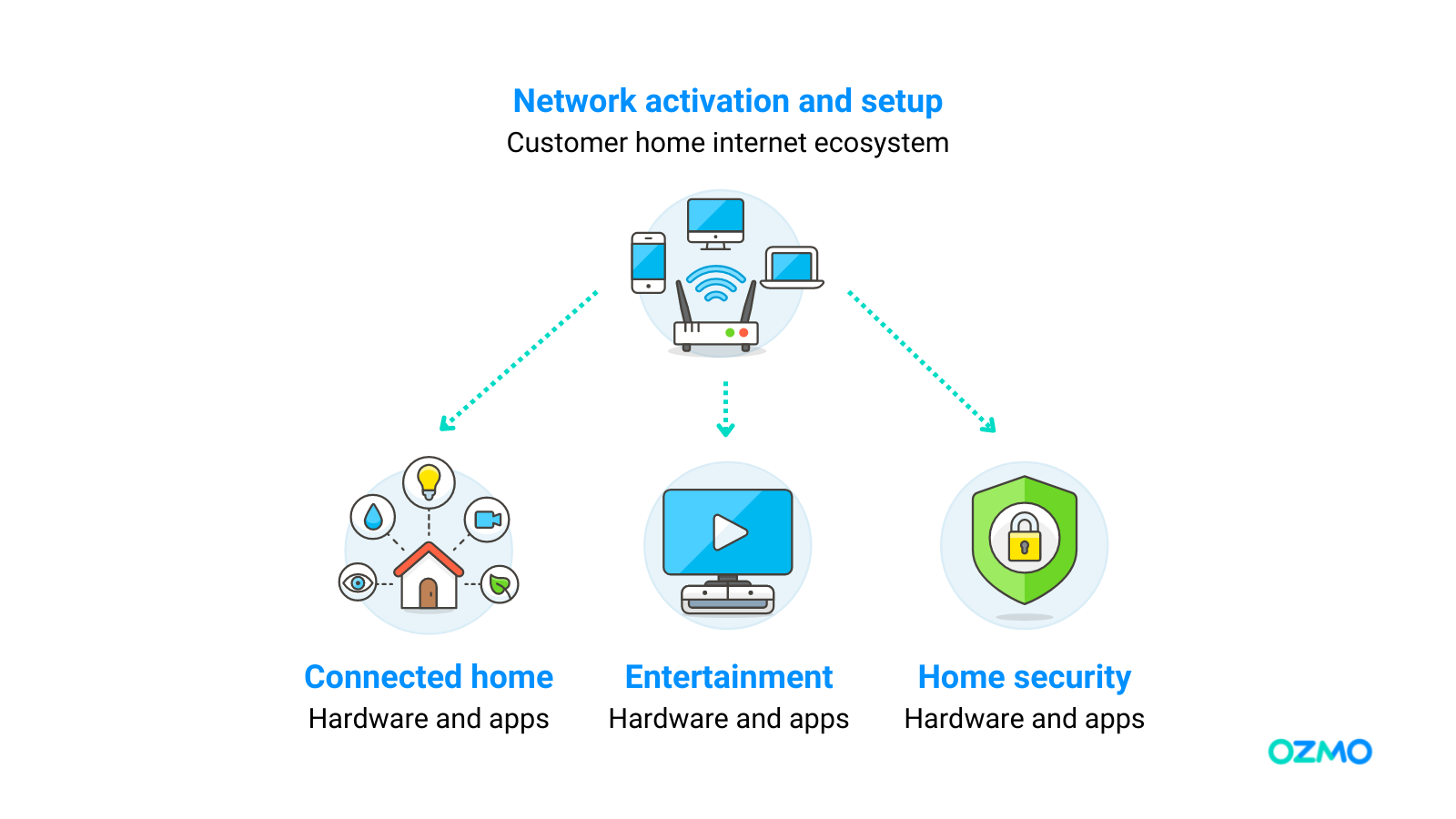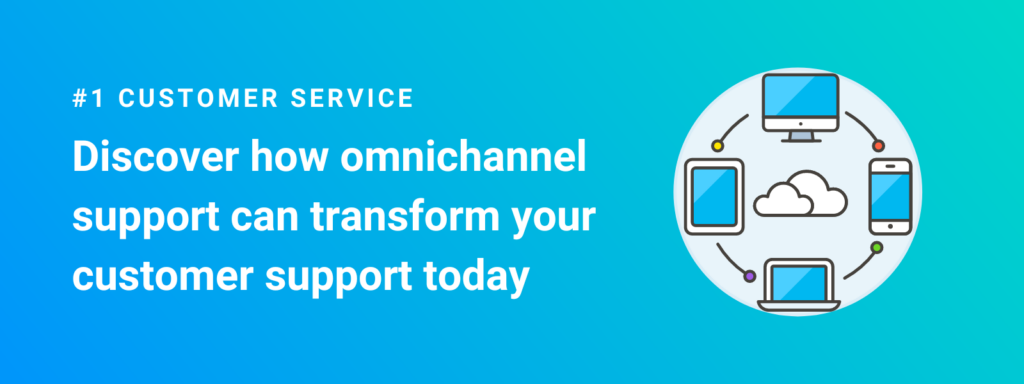5G home internet is here and that means changes for both customers of 5G products and those providing them. 500% faster speeds means customers’ lives and providers’ lives are going to be different. It’s a new world of increased connectivity, collaboration and with that, new support needs.
Everything 5G can be a lot of information to digest, so this blog post will identify: the basics, the details and ultimately what the new, scarcely explored world of 5G home internet means for the world.
Looking to provide the best home internet support?
What is 5G?
In short, 5G is the fifth generation of mobile networks. With every technology leap, 5G is known to be exponentially greater than the last. Improvement will be in a few key areas, starting with speed. 5G speeds will be 500% faster than 4G. This means where 4G would cap out at around 200mbps (megabits per second) of throughput, meaning download and upload speeds, 5G can actually reach over 1000 Mbps (or one Gigabit).
Second, you’ll experience much lower latency. Latency is defined as the delay before a transfer of data begins following an instruction for its transfer, or the time it takes a computer or device to start a download. In current 4G environments, latency sits around 100 milliseconds. In 5G environments, latency will be one millisecond, or in other terms, instantaneous. Lastly, 5G is designed to significantly improve network traffic capacity and efficiency. These improvements will lay the foundation for a world filled with smarter devices, all while communicating with each other in a dense network of smart ecosystems and operating at incredible speeds. One of the most interesting places these changes will take root is in our homes with the birth of 5G home internet.
How does 5G work?
Now that we’ve defined 5G, it’s worth exploring the ‘how” behind all of this. 5G uses an assortment of new technologies and techniques to accomplish this exponential network improvement. Some of these technologies include new radio and microwave equipment that will leverage wider bandwidth technologies such as sub-6 GHz and millimeter wave, leading to the 500% increase in speed and decreased latency.
What does the expansion mean for customers?
With the rollout of 5G home internet, internet providers can now bring wireless internet to residences at comparable, often greater speeds than that of the traditional wired connections we often think of when we hear the term “home internet”. This means that all of the previously-mentioned improvements (speed, decreased latency and denser device connections) are now available in homes that before may have been stuck with the slower 4G fixed wireless connections.
As 5G continues to roll out all over the country, more and more homes will be eligible to receive 5G home internet access. This will require a new home internet device to receive and broadcast that 5G signal throughout the home, replacing the current home network devices. This will give customers the ability to expand their home network capabilities and create sophisticated smart home ecosystems to best serve them. Devices like smart speakers, hubs, smart TVs, smart lights and smart fans, individual smart outlets and smart blinds – all controlled via voice or a mobile application – are expected to multiply in homes across the country. All of the smart technology already exists, but with the expansion of 5G home networks able to support dozens of devices, the ability for customers to create or expand these connected home ecosystems will grow.
The reality of the 5G expansion for providers
For many providers, this may sound intimidating, confusing and somewhat frustrating to deal with. With this new 5G capability, each new device that comes with it will need support. How do customers set up a 5G home internet network and all of the new devices it can now support? How do these devices communicate with each other and create an automated home? What if a smart outlet from one company needs to be connected with a smart speaker from another – can this be done? What apps need to be used to configure this communication? The truth is, these smart ecosystems have been around for a few years now, but with the rollout of 5G, and the increased accessibility of 5G capable networks to support them, the demand for those devices and the support needs for them will skyrocket.
A common question among internet providers is, “how do we support these third-party devices, and should we”. That question highlights a critical decision that providers are now facing across the US. Contact centers are receiving calls from customers asking about third-party connected home devices (Google Home, Ring doorbell, etc) but they don’t know if they should try to help, or point them to the manufacturer.
The answer is yes, providers should always try to help the customer. It’s never a good idea for a service provider to send a loyal customer elsewhere for support when instead, they can help them while already engaged and increase their brand loyalty. It’s never optimal to send a customer to someone else’s website for support, or tell them after they’ve waited on hold to call another company for help because you can’t troubleshoot their new home security system. Instead, the customer service winners of this new 5G home internet age will be positioned to help customers with a wide assortment of home internet devices. From their own network equipment to a smart doorbell. As device ecosystems continue to grow, support for those ecosystems are expected to grow with them.

How to provide effective 5G home internet support
So how do broadband providers achieve effective 5G support interactions, and what tools will they need? One of the leading ways broadband providers can deliver unmatched customer support is through an omnichannel support platform. Omnichannel support solutions are designed to help providers address and solve devices and app problems starting with their own network equipment and continuing through the complex needs of a customer with connected home devices.
Support for contact centers
5G home internet support starts with delivering the right answers to customers in their preferred channels. As customers upgrade to new gateways, providers will receive a slew of calls with network setup and activation questions. Ensuring an agent is equipped to walk customers through the setup of a new gateway will be critical to support. As customers begin to expand their connected home devices, agents are then equipped to support customers using a robust library of connected home solutions, across multiple brands will be a key differentiator for broadband providers.
This can be done through the use of virtual devices and apps. With virtual devices and apps, agents can quickly navigate to a virtual Ring doorbell or Sonos smart speaker and confidently troubleshoot solutions rather than googling answers and guessing at solutions for customer issues. Additionally, by virtualizing the companion application, like the Google Home app or the Amazon Alexa app, agents have total access to the full range of functionality of these connected home ecosystems.
Support for customers
Finally, we know that customers often try to solve their own problems before involving agents. It will be just as critical for providers to surface customer-facing solutions on their websites and applications to give their customers a chance at self-helping. This will present its own hurdles for providers, as they attempt to keep up with the changing technology and keep their self-serve answers up to date. This is why omnichannel support for home internet providers keeps the answers consistent across the board for both assisted and self-serve channels. Broadband providers today are looking to improve their call deflection and reduce call center overhead, and with the right support tools for customers and agents alike, they can do just that.
The opportunity to win in the 5G expansion
As we know, there is a lot changing and the industry will need to continue to adapt with it. There has never been a greater need for a robust library of virtual devices coupled with the ability to surface accurate and reliable, self-serve answers. But this doesn’t need to be a problem or threat to businesses. Instead, 5G home internet and the expanded needs that come with it can be an incredible opportunity for providers to grow and retain their customers as support needs continue to rise. This will be a real challenge for most, which is why Ozmo continues to provide its customers with the right tools to meet these needs and help them differentiate their business from the competition. Those with the ability to lead in customer support will still be around for 6G.




